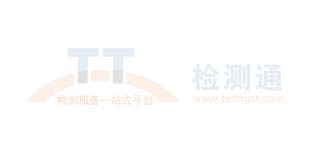 检测认证人脉交流通讯录
检测认证人脉交流通讯录
- MMS®仪器使用不同的探头和测试模块,可以实现不同的测试方法。
FISCHERSCOPE® MMS®系列仪器是通用的涂镀层和材料特性测量系统。模块化设计使使用者可以组合和配置不同的测试方法,这样实际上就可以测量任意的涂层/镀层组合。MMS®系统可以配置多种Fischer智慧型探头,这样,使用者就可以下列测试方法中的一种或其组合实现无损测量:磁感应法,涡流法,BETA散射法,霍耳效应或电阻法。
由于其具备多种不同的测试方法,MMS®系列广泛应用于多种场合:
电镀车间,
线路板生产过程,
汽车厂,
航天机械厂,等等。
FISCHERSCOPE®
MMS® FISCHERSCOPE®
MMS® PC
涂镀层厚度测量
线路板质量保证
一次测量油漆/锌涂层
铝制圆筒管和饮料容器上的涂层厚度测量
薄塑料片的厚度
测量奥氏体钢和双炼钢的铁素体含量
非铁磁金属电导率
按照客户规定来记录,管理和统计测量数据
使用现代SPC/SQC法来设定控制图和统计测量数据
组织测量数据
RS232接口
LAN网线接口和USB
存储器扩展(CF卡)
自动测量设备
安装任何插入型模块 有限
最多4个模块max. 4 modules
最多8个模块
液晶图像显示 背景灯
126 x 70 mm
(5 x 2.75) 彩色,触摸屏
170 x 125 mm
(6.6 x 5)
FISCHERSCOPE® MMS® PC
集镀层厚度测量和材料测试与一体,FISCHERSCOPE® MMS® PC是一款简洁并极其通用的台式多功能测量系统带数据档案和测量数据处理能力。可用于手工的样品检测,以及过程控制和生产过程中的昼夜监控。可配合品种繁多的测量探头以适用于各种不同几何形状和测量范围的测试工件。
许多不同的插入式测试模块允许组合成许多不同的配置以满足用户需求。模块化的设计允许仪器在任何时候进行扩展。根据应用程式可安装类似或不同的模块。
配置举例:
为了在印刷线路板制造上实现多用途的镀层厚度测量, 可以在FISCHERSCOPE® MMS® PC中装入模块BETASCOPE®, SIGMASCOPE®/PHASCOPE, SR-SCOPE 以及PERMASCOPE® 。这样的仪器配置就允许下列的测量:
连接器上金镀层,焊接框架上铅锡合金层,以及感光膜涂层。( BETASCOPE®模块)
表面覆铜板厚度和通孔内的铜镀层厚度。(SIGMASCOPE®/PHASCOPE模块)
积层板和多层板上铜的厚度,不受背面铜层的任何干扰。(SR-SCOPE).
铜上阻焊膜厚度。(PERMASCOPE®)
在汽车零部件工业,FISCHERSCOPE® MMS® PC 配置模块PERMASCOPE®, NICKELSCOPE® 和 BETASCOPE®以达到多用途的应用于:
活塞表面的石墨涂层或刹车盘上抗腐蚀涂层。(PERMASCOPE®)
活塞表面的含铁镀层(NICKELSCOPE®).
我们提供了大量的插入式模块以达到最大的灵活性:
PERMASCOPE®模块
NICKELSCOPE®模块
BETASCOPE®模块
SR-SCOPE模块
SIGMASCOPE®-PHASCOPE 1/TEMPERATURE模块
Module SIGMASCOPE®-PHASCOPE 2模块
TEMPERATURE模块
MMS® PC PCMCIA模块
LAN/USB模块
User-Friendly
The FISCHERSCOPE® MMS® PC features a large, high-resolution color LCD touch screen. The touch screen enables quick and easy handling of measurements, storage, evaluation, and documentation tasks. The instrument operates with a Windows® CE based application software comparable with MSWord or MSExcel. The operation is simple, easy to learn, and uniform for all test methods. The MMS® PC offers practically unlimited memory for measurement parameters and values as well as up-to-date possibilities for network integration and online applications.
Three measurement presentation choices are available to discern important information immediately (Numeric Display Mode, Control Chart Display Mode, Specification Limit Display Mode or Simple Operation Mode).
Evaluation
The FISCHERSCOPE® MMS® PC saves the user from having to do complicated and extensive mathematical computations for the statistical evaluation of the measurement data. The statistical characteristics can be viewed and printed in list form and as graphics such as sum frequency and histogram.
Module PERMASCOPE®
This plug-in testing module utilizes the magnetic induction and eddy current test method to measure:
Thickness of paint, lacquer, plastic, synthetic, metallic coatings such as zinc, chromium, etc. on iron and steel (non-ferrous coatings/ferrous substrates).
Thickness of paint, plastic, lacquer, ceramics coatings on non-ferrous metals such as copper, brass, aluminum, etc. (non-conductive coatings/non-ferrous substrates). Also for measurements of anodized coatings on aluminum and for coating thickness measurement of tubes and beverage made of aluminum.
Delta ferrite content in austenitic weld metal or duplex stainless steel.
Module NICKELSCOPE®
This plug-in testing module utilizes the Hall effect method to measure the thickness of nickel or steel coatings on non-ferrous substrates. Use this module to measure:
Electroplated nickel coatings deposited on electrically non-conductive or non-ferrous substrates.
Thick non-ferrous metal coatings, e.g., copper, aluminum, or lead coatings on iron or steel.
Module BETASCOPE®
This plug-in testing module utilizes the beta backscatter method. It allows the thickness measurement of coatings consisting of practically any material on any substrate under the condition that there is a difference of at least 5 atomic numbers between coating and substrate materials. This module is applied:
in the PC-board industry to measure the thickness of conformal coatings, SnPb, Au or Ni coatings.
in plating shops for the economical measurement of single coatings with hand probes.
in paint production and applications to measure the thickness of organic coatings on metallic substrates.
in sheet metal production and processing industries for quality inspection of anti-corrosive oil films, "Bonazinc" coatings, etc.
Module SR-SCOPE
This plug-in testing module utilizes the electrical resistance method and is suitable for the surface copper thickness measurement on multilayers. Particularly Cu coatings on thin laminates, the starting material for multilayer pc-boards, as well as on multilayers with epoxy interim coatings can be measured.
Cu coatings with a thickness of 0.1 to 10 µm (0.04 to 0.4 mils) and 5 to 120 µm (0.2 to 4.7 mils) without interference of interim Cu.
Module SIGMASCOPE®-PHASCOPE 1/TEMPERATURE
This plug-in testing module utilizes the phase-sensitive eddy current method. It is used for the measurement of the:
electrical conductivity of non-ferrous metals (automatic temperature compensation is possible with the probe integrated or external temperature sensor).
thickness of non-ferrous metal coatings, e.g. zinc, copper, aluminum etc., on steel and iron, especially in cases of high surface roughness or on electrically non-conductive substrates.
thickness of non-ferrous metal coatings with high electrical conductivity on non-ferrous parts with low conductivity, e.g. copper on brass or austenitic material.
thickness of plated nickel coatings on steel and iron.
copper coatings under solder resist.
Module SIGMASCOPE®-PHASCOPE 2
This module completes the module SIGMASCOPE®-PHASCOPE1/TEMPERATURE for the combination of the magnetic induction and eddy current phase-sensitive test method. It allows the one-step measurement of the individual thickness of a paint/zinc coating system (duplex coating) on steel and for copper plating thickness in bore holes of pc-boards.
TEMPERATURE
Plug-in testing module for temperature measurement with the probe TF100 A (temperature probe with PT100 sensor) in a range of -20 °C to +80 °C (-4 to +176 °F). For some cases the temperature measurement may be useful, for the temperature compensation of measurements for example with the beta backscatter method or the electrical resistance test method.
 检测认证人脉交流通讯录
检测认证人脉交流通讯录







